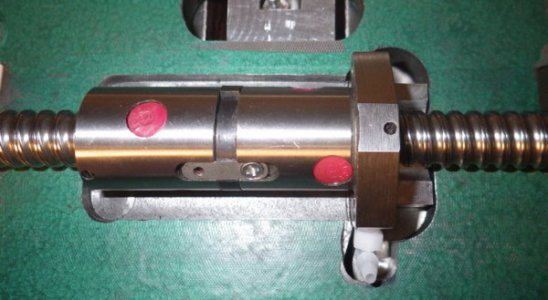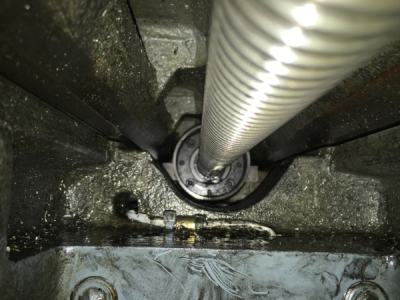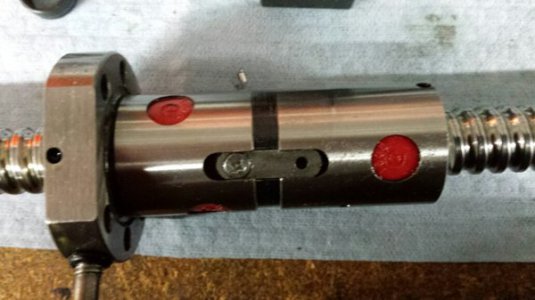Bob, I copied this over from the Grizzly G0704 Cnc Conversion thread
That was me. With preload on the ball nuts there is an interference fit, so therefore no axial movement is possible between the ballscrew and the ballnut. This also assumes that the ball track is not somehow floating inside of the ballnut, not sure if that is even possible. This also applies to the preloaded end support bearing, if everything is tight no axial movement is possible. Now, having said that, the overall system may have flex, stretch, or looseness in it that would manifest as backlash.
I answered this over on that G0704 CNC Conversion thread so I'll copy it over here, too.
If that came across as harsh or critical, I didn't mean it that way. By background, I'm an engineer (electrical - so mechanical is mostly out of my "comfort zone") and I'm just trying to understand what's going on. Obviously, nothing is zero backlash to the millionth of an inch, and probably not to a tenth (.0001"). It seems like
something is always going to show up that looks like backlash. If it's always there, when do we stop chasing things? When is it "good enough"? I guess we all make that call.
As I said, I have backlash issues on my newly converted G0704, too. Quite a bit worse than Tom's (.010"). Before I take apart my mill, I'd like to have a good idea of what I'm looking for.
I had to re-ball one of the ballnuts off of one of Chai's ballscrew/nut combinations and while I know there's not supposed to be axial motion, I didn't see anything in there that would guarantee that. I didn't see a shim of any kind. I didn't take the two halves apart, though, so it's possible one was in there.
One of those things I've read is that people put larger ball bearings into the ballnuts and take out backlash that way. The way I think of it, there are something like 8 races in the linearmotion ballnuts. If you have 5 mils of backlash, maybe that means you make the balls .005/8 bigger or .000625". The ones I just bought were .1244", this would say to use 0.1250 bearings. Turns out the ebay seller I bought from sells them. Is that .005 divided over the 8 races the right way to think of this?
The thing that gets me is that ballscrews (really all screws) have imperfections from turn to turn so that the exact distance between turns wanders around the ideal. When I was looking at my screws with a dial indicator, some spots seemed to be off about .001" from one tenth (0.100") to another but averaged out to be right. It worked out that going from tenth to tenth it could be 0.1.00, 0.099 or .101, but over the few .500" intervals I measured it was perfect. Regardless of lost motion in the machine, that .001" is going to show up on some cuts. There are different "classes" of screw that have tighter or loser tolerances on this, and as you'd expect, the higher the class of screw, the more expensive. Now, having a circle out of round by .001, or a hole location off by .001 isn't always going to matter, but it's always there.
What about the way they deform under load? Under load, the balls go out of round and the thread they're in changes shape, too. It probably doesn't contribute to backlash, but it contributes to overall accuracy.
Sorry if this is rambling. As I say, I'm trying to understand all this. Is there a general tutorial approach to tracking down where backlash is coming from? A "do this, check that"? kind of thing?



